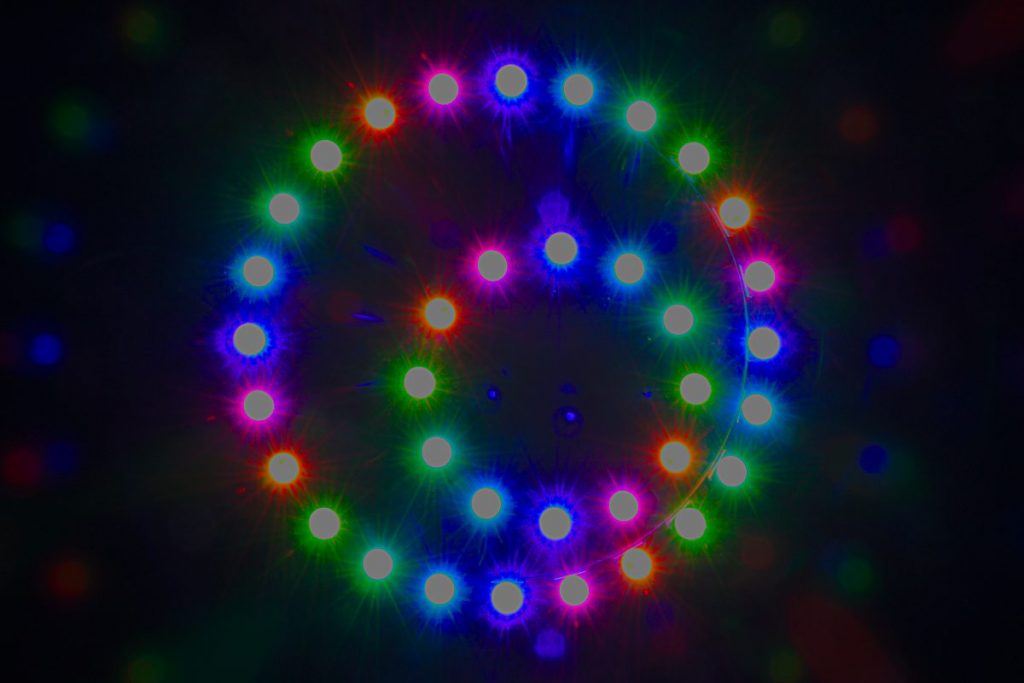… or what you get if you video concentric RGB LED rings and put them out of focus.

work as if you live in the early days of a better nation
Rods! Or more specifically, Cuisenaire® Rods! Staples of my childhood arithmetic education: coloured wooden rods (now plastic, which will save them from the mouldy fate that befell some sets at Mearns Primary School), 1 × 1 × 1–10 centimetres long. Use them for counting, number lines, don’t-do-that renditions of Sun Arise, but absolutely never for flinging at tiny classmates.
Since it may actually have been Mrs. Cuisenaire who came up with the concept of rods, I drew a log cabin quilt section in virtual rods. The Gattegno in the title refers to Caleb Gattegno, the mid-century educator who popularized Cuisenaire’s work.
Should you too feel the need to have a virtual set of rods, here are some files you can play with in Inkscape (or any other SVG-aware editor):
The colours might be a bit off reality, but they’re near enough. I found it helpful to set a grid snap in Inkscape to 1 cm so that you could get the rods to align easily. If you want to get really nerdy, here’s the PostScript source I used to create the rods: rods.ps. I think I finally got the hang of basic arrays in PostScript …
Creating this was in no way a means of me displacing getting round to doing my taxes this year, nosirree.
Instagram filter used: Normal
I got my ColorHug calorimeter the other day. You can’t tell, but this laptop display is a bunch warmer than it was, and there are now colours springing out of what was formerly murk (sproing!).
It’s still very much in beta (and I mean that the way it used to mean), so it works but is a bit fiddly. It currently has to boot from a Linux live CD; there’s no native OS X or Windows support. There’s a very active user group, and issues are being found and squished daily.
For as long as I can remember (and likely before it), Weetabix has been my breakfast. The familiar yellow box has always been a priority item in the shop:

But now it’s gone blue!

How am I supposed to find it now? No other breakfast box had the familiar (and yes, comforting) colour. There is yellow on the box, but it’s different – lighter, less substantial.
If you need me, I’ll be the one in the corner, rocking and emitting small mewling noises.
